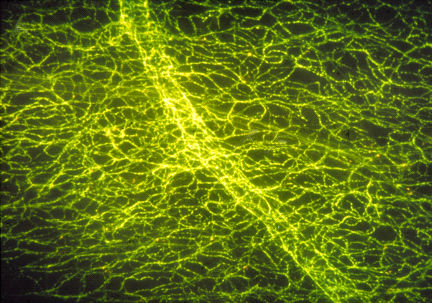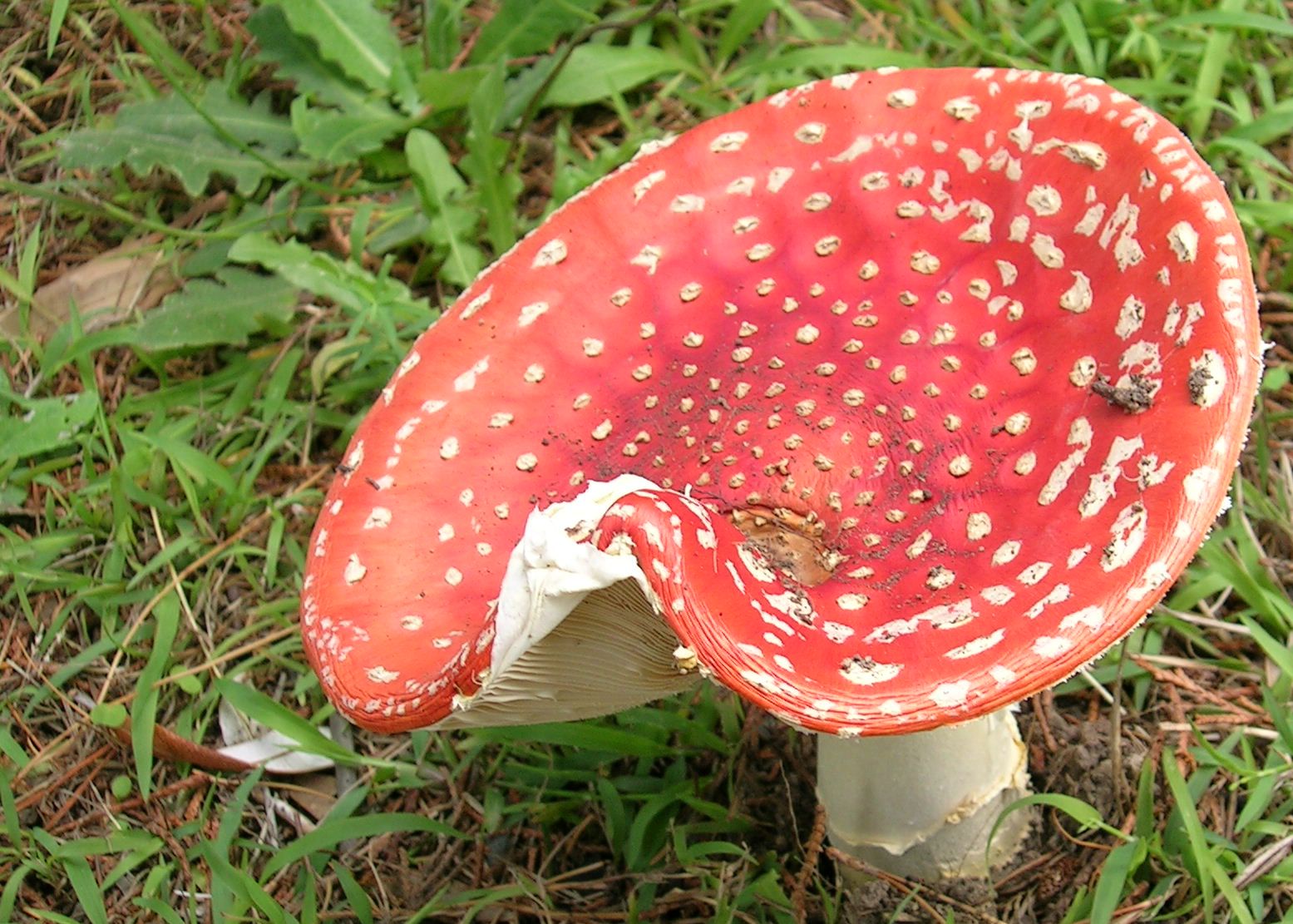|
History Of Catecholamine Research
The catecholamines comprise the endogenous substances dopamine, noradrenaline (norepinephrine), and adrenaline (epinephrine), as well as numerous artificially synthesized compounds such as isoprenaline, an anti-bradycardiac medication. Their investigation comprises a major chapter in the history of physiology, biochemistry, and pharmacology. Adrenaline was the first hormone extracted from an endocrine gland and obtained in pure form, before the word ''hormone'' was coined. Adrenaline was also the first hormone whose structure and biosynthesis were discovered. Second to acetylcholine, adrenaline and noradrenaline were some of the first neurotransmitters discovered, and the first intercellular biochemical signals to be found in intracellular vesicles. The β-adrenoceptor was the first G protein-coupled receptor whose gene was cloned. Adrenaline in the adrenal medulla Forerunners British physician and physiologist Henry Hyde Salter (1823–1871) included a chapter on treatme ... [...More Info...] [...Related Items...] OR: [Wikipedia] [Google] [Baidu] |
Catecholamines
A catecholamine (; abbreviated CA) is a monoamine neurotransmitter, an organic compound that has a catechol (benzene with two hydroxyl side groups next to each other) and a side-chain amine. Catechol can be either a free molecule or a substituent of a larger molecule, where it represents a 1,2-dihydroxybenzene group. Catecholamines are derived from the amino acid tyrosine, which is derived from dietary sources as well as synthesis from phenylalanine. Catecholamines are water-soluble and are 50% bound to plasma proteins in circulation. Included among catecholamines are epinephrine (adrenaline), norepinephrine (noradrenaline), and dopamine. Release of the hormones epinephrine and norepinephrine from the adrenal medulla of the adrenal glands is part of the fight-or-flight response. Tyrosine is created from phenylalanine by hydroxylation by the enzyme phenylalanine hydroxylase. Tyrosine is also ingested directly from dietary protein. Catecholamine-secreting cells use several re ... [...More Info...] [...Related Items...] OR: [Wikipedia] [Google] [Baidu] |
G Protein-coupled Receptor
G protein-coupled receptors (GPCRs), also known as seven-(pass)-transmembrane domain receptors, 7TM receptors, heptahelical receptors, serpentine receptors, and G protein-linked receptors (GPLR), form a large group of evolutionarily-related proteins that are cell surface receptors that detect molecules outside the cell and activate cellular responses. Coupling with G proteins, they are called seven-transmembrane receptors because they pass through the cell membrane seven times. Text was copied from this source, which is available under Attribution 2.5 Generic (CC BY 2.5) license. Ligands can bind either to extracellular N-terminus and loops (e.g. glutamate receptors) or to the binding site within transmembrane helices (Rhodopsin-like family). They are all activated by agonists although a spontaneous auto-activation of an empty receptor can also be observed. G protein-coupled receptors are found only in eukaryotes, including yeast, choanoflagellates, and ... [...More Info...] [...Related Items...] OR: [Wikipedia] [Google] [Baidu] |
Harrogate
Harrogate ( ) is a spa town and the administrative centre of the Borough of Harrogate in North Yorkshire, England. Historic counties of England, Historically in the West Riding of Yorkshire, the town is a tourist destination and its visitor attractions include its spa waters and Harlow Carr, RHS Harlow Carr gardens. away from the town centre is the Yorkshire Dales National Park and the Nidderdale AONB. Harrogate grew out of two smaller settlements, High Harrogate and Low Harrogate, in the 17th century. For three consecutive years (2013–2015), polls voted the town as "the happiest place to live" in Britain. Harrogate spa water contains iron, sulphur and common salt. The town became known as 'The English Spa' in the Georgian era, after its waters were discovered in the 16th century. In the 17th and 18th centuries its 'chalybeate' waters (containing iron) were a popular health treatment, and the influx of wealthy but sickly visitors contributed significantly to the wealth of th ... [...More Info...] [...Related Items...] OR: [Wikipedia] [Google] [Baidu] |
Spa Town
A spa town is a resort town based on a mineral spa (a developed mineral spring). Patrons visit spas to "take the waters" for their purported health benefits. Thomas Guidott set up a medical practice in the English town of Bath in 1668. He became interested in the curative properties of the hot mineral waters there and in 1676 wrote ''A discourse of Bathe, and the hot waters there. Also, Some Enquiries into the Nature of the water''. This brought the purported health-giving properties of the waters to the attention of the aristocracy, who started to partake in them soon after. The term ''spa'' is used for towns or resorts offering hydrotherapy, which can include cold water or mineral water treatments and geothermal baths. Argentina *Termas de Rio Hondo *Presidencia Roque Sáenz Peña Australia There are mineral springs in the Central Highlands of Victoria. Most are in and around Daylesford and Hepburn Springs. Daylesford and Hepburn Springs call themselves 'Spa Countr ... [...More Info...] [...Related Items...] OR: [Wikipedia] [Google] [Baidu] |
Peristalsis
Peristalsis ( , ) is a radially symmetrical contraction and relaxation of muscles that propagate in a wave down a tube, in an anterograde direction. Peristalsis is progression of coordinated contraction of involuntary circular muscles, which is preceded by a simultaneous contraction of the longitudinal muscle and relaxation of the circular muscle in the lining of the gut. In much of a digestive tract such as the human gastrointestinal tract, smooth muscle tissue contracts in sequence to produce a peristaltic wave, which propels a ball of food (called a bolus before being transformed into chyme in the stomach) along the tract. The peristaltic movement comprises relaxation of circular smooth muscles, then their contraction behind the chewed material to keep it from moving backward, then longitudinal contraction to push it forward. Earthworms use a similar mechanism to drive their locomotion, and some modern machinery imitate this design. The word comes from New Latin and is ... [...More Info...] [...Related Items...] OR: [Wikipedia] [Google] [Baidu] |
Muscarine
Muscarine, L-(+)-muscarine, or muscarin is a natural product found in certain mushrooms, particularly in ''Inocybe'' and ''Clitocybe'' species, such as the deadly '' C. dealbata''. Mushrooms in the genera ''Entoloma'' and ''Mycena'' have also been found to contain levels of muscarine which can be dangerous if ingested. Muscarine has been found in harmless trace amounts in ''Boletus'', ''Hygrocybe'', ''Lactarius'' and ''Russula''. Trace concentrations of muscarine are also found in ''Amanita muscaria'', though the pharmacologically more relevant compound from this mushroom is the Z-drug-like alkaloid muscimol. ''A. muscaria'' fruitbodies contain a variable dose of muscarine, usually around 0.0003% fresh weight. This is very low and toxicity symptoms occur very rarely. ''Inocybe'' and ''Clitocybe'' contain muscarine concentrations up to 1.6%. Muscarine is a nonselective agonist of the muscarinic acetylcholine receptors. History The name ''muscarine'' derives from that o ... [...More Info...] [...Related Items...] OR: [Wikipedia] [Google] [Baidu] |
Vagus Nerve
The vagus nerve, also known as the tenth cranial nerve, cranial nerve X, or simply CN X, is a cranial nerve that interfaces with the parasympathetic control of the heart, lungs, and digestive tract. It comprises two nerves—the left and right vagus nerves—but they are typically referred to collectively as a single subsystem. The vagus is the longest nerve of the autonomic nervous system in the human body and comprises both sensory and motor fibers. The sensory fibers originate from neurons of the nodose ganglion, whereas the motor fibers come from neurons of the dorsal motor nucleus of the vagus and the nucleus ambiguus. The vagus was also historically called the pneumogastric nerve. Structure Upon leaving the medulla oblongata between the olive and the inferior cerebellar peduncle, the vagus nerve extends through the jugular foramen, then passes into the carotid sheath between the internal carotid artery and the internal jugular vein down to the neck, chest, and abdom ... [...More Info...] [...Related Items...] OR: [Wikipedia] [Google] [Baidu] |
Strasbourg
Strasbourg (, , ; german: Straßburg ; gsw, label=Bas Rhin Alsatian, Strossburi , gsw, label=Haut Rhin Alsatian, Strossburig ) is the prefecture and largest city of the Grand Est region of eastern France and the official seat of the European Parliament. Located at the border with Germany in the historic region of Alsace, it is the prefecture of the Bas-Rhin department. In 2019, the city proper had 287,228 inhabitants and both the Eurométropole de Strasbourg (Greater Strasbourg) and the Arrondissement of Strasbourg had 505,272 inhabitants. Strasbourg's metropolitan area had a population of 846,450 in 2018, making it the eighth-largest metro area in France and home to 14% of the Grand Est region's inhabitants. The transnational Eurodistrict Strasbourg-Ortenau had a population of 958,421 inhabitants. Strasbourg is one of the ''de facto'' four main capitals of the European Union (alongside Brussels, Luxembourg and Frankfurt), as it is the seat of several European insti ... [...More Info...] [...Related Items...] OR: [Wikipedia] [Google] [Baidu] |
Oswald Schmiedeberg
Johann Ernst Oswald Schmiedeberg (10 October 1838 – 12 July 1921) was a Baltic German pharmacologist. In 1866 he earned his medical doctorate from the University of Dorpat with a thesis concerning the measurement of chloroform in blood, before becoming the first professor of pharmacology at the University of Strasbourg, where he remained for 46 years. In 1911, he testified in the ''United States v. Forty Barrels and Twenty Kegs of Coca-Cola'' trial, and later, was a major factor in the success of the German pharmaceutical industry prior to the Second World War, having trained most of the European professors at the time. Early life and family Oswald Schmiedeberg was born in Courland, one of the Baltic provinces of Russia. His father Wilhelm Ludwig (1809–1878) was a bailiff in Leidzen and later forester in Paggar (Estonia). His mother Anna Lucie Bernard (1813–1871) was the daughter of a watchmaker from Lausanne. Oswald was the eldest of six siblings of whom a brother Johann ... [...More Info...] [...Related Items...] OR: [Wikipedia] [Google] [Baidu] |
Iron(III) Chloride
Iron(III) chloride is the inorganic compound with the formula . Also called ferric chloride, it is a common compound of iron in the +3 oxidation state. The anhydrous compound is a crystalline solid with a melting point of 307.6 °C. The colour depends on the viewing angle: by reflected light the crystals appear dark green, but by transmitted light they appear purple-red. Structure and properties Anhydrous Anhydrous iron(III) chloride has the structure, with octahedral Fe(III) centres interconnected by two-coordinate chloride ligands. Iron(III) chloride has a relatively low melting point and boils at around 315 °C. The vapor consists of the dimer (like aluminium chloride) which increasingly dissociates into the monomeric (with D3h point group molecular symmetry) at higher temperature, in competition with its reversible decomposition to give iron(II) chloride and chlorine gas. Hydrates In addition to the anhydrous material, ferric chloride forms four hydrates. All ... [...More Info...] [...Related Items...] OR: [Wikipedia] [Google] [Baidu] |
Alfred Vulpian
Edmé Félix Alfred Vulpian (5 January 1826 – 18 May 1887) was a French physician and neurologist. He was the co-discoverer of Vulpian-Bernhardt spinal muscular atrophy and the Vulpian-Heidenhain-Sherrington phenomenon. Vulpian was born in Paris, France, in 1826. Among other noted discoveries and experiments, Vulpian discovered adrenaline in the adrenal medulla. He was the first to use the term "fibrillation" to describe a chaotic irregular rhythm of the heart.Cardioversion Past, Present and Future. Cakulev I, Efimov I and Waldo A. Circulation 2009; 120:1623–1632 Vulpian's monument in Paris A large marble statue has been erected to Vulpian, just at the end of Rue Antoine Dubois, a short distance from the Faculty of Medicine in which he once taught. In the basement, there is the following inscription: . Bibliography * ''Essai sur l'origine réelle de plusieurs nerfs crâniens''. Doctoral thesis, Paris, 1853. * Note sur quelques réactions propres à la substance des capsules ... [...More Info...] [...Related Items...] OR: [Wikipedia] [Google] [Baidu] |







